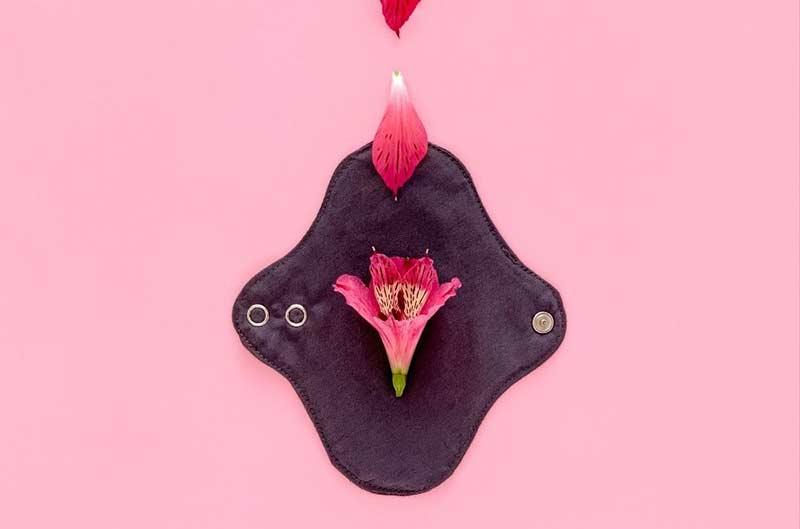Antarctica, Earth’s most remote wilderness, offers travellers more than icebergs and penguins - it delivers powerful lessons in resilience, patience, and perspective. Facing freezing winds and unpredictable conditions builds mental toughness, while constant changes teach flexibility and the ability to embrace uncertainty. The slow rhythm of the continent encourages mindfulness, helping visitors appreciate stillness and detail in daily life. Standing amidst endless ice shifts priorities, reminding us what truly matters beyond deadlines and bills. Overcoming the physical and emotional challenges of this extreme destination boosts confidence that lasts long after the journey ends. An Antarctic adventure is not only an unforgettable experience but also a natural training ground for sustainable living and inner growth.
Share your articles with us and get published! Reach out at hello@friendlyturtle.com.
How to Make Your Own Reusable Sanitary Pads

Ever thought about how to make reusable sanitary pads for yourself? Thats exactly what we're here to discuss today.
Did you know that some disposable pads can contain as much plastic as four supermarket bags? Besides generating tons of waste, disposable menstrual pads could also irritate your skin. And that’s when reusable sanitary pads come in handy. They’re plastic-free, cost-effective, durable, and easy to make!
There are plenty of reusable sanitary pads available to buy, in just about any colour or pattern. They're easy to care for, better for your health, and super-gentle on our environment. But that's not what we're here for today, oh no.
Want to know how to make reusable sanitary pads for yourself? Good! We’re here to help you with exactly that.
In this article, we’ll teach you how to make cotton sanitary pads at home, including what materials you need, the best fabrics to use, and some useful tips!

Materials Needed to Make Reusable Sanitary Pads
Before learning how to make reusable sanitary pads, let’s check the best materials to use:- A disposable sanitary pad to make your template
- A sewing machine or a needle
- Buttons or snaps
- Fabric scissors
- Sewing pins
- A marker pen
- Thick paper
- Fabrics
- Thread

What Fabrics Should You Use to Make Cotton Sanitary Pads?
- Cotton, cotton flannel, or cotton fleece for the top and bottom outer layers
- A thick fabric, like an old towel, for the centre of your cloth pad (core)
- PUL fabric to add a waterproof layer
How to Make Cotton Sanitary Pads at Home?
Making your own cotton sanitary pads is not as complicated as it sounds, you can hand sew your pads or use a sewing machine to get better results. With that in mind, here’s how to make reusable sanitary pads:
Step #1: Create Your Template
Trace the disposable sanitary pad on your paper and create your template.
Step #2: Cut the Fabrics
After tracing your template on the fabrics, use a sharp scissor to cut two pieces of cotton, these will be the topper piece and backer piece of your reusable sanitary pad. Next, cut a piece of PUL fabric to have a waterproof layer.
For the core pieces, just cut the pad shape, we don’t need the wings for these pieces. Depending on how absorbent your core pad fabric is, you could cut two or three pieces.
Step #3: Sew the Core Pieces
Sew the pad core pieces together to make a combined piece.
Step #4: Sew that Combined Piece to the Topper Piece
Fold your top body piece in half and press it to mark a middle line. Then, place your combined core piece on top of the reverse side of the topper piece. Make sure to line up the centre of the core with the marked middle line of your topper piece. Now, pin in place and sew the core piece to the top body piece.
Step #5: Sew the Pad
Place your waterproof layer (PUL fabric) on top of the reverse side of the backer piece and treat them as one piece. Once you’ve done this, pin the topper and backer pieces together with the right sides facing in. Next, sew around them using a 0.5-centimetre seam allowance, and don’t forget to leave a gap of about 5 cm. And finally, remove excess fabric without weakening the seam.
Step #6: Turn the Pad Right Side Out
Turn the pad through the small gap and press with a steam iron to sharpen the edges. To close off the gap and add a final touch to your creation, topstitch around the reusable sanitary pad.
Step #7: Attach the Snaps or Sew a Button
Your cotton sanitary pad is almost done! Don’t forget to put a button, plastic snaps, or metal poppers on your cotton sanitary pad to keep it attached when in use.
And this is how you can make a reusable sanitary pad! Follow these basic steps on how to make cotton sanitary pads at home and ditch disposable period products once and for all.  Or does making your own reusable sanitary pads not sound like a bit of you? We can help with that too. Check out our eco friendly period products range for more ethical and eco-conscious inspiration to green your monthly periods :)
Or does making your own reusable sanitary pads not sound like a bit of you? We can help with that too. Check out our eco friendly period products range for more ethical and eco-conscious inspiration to green your monthly periods :)
0 comments
Let customers speak for us
Blog posts
Mindful gift giving is about more than price tags or surprises – it’s about creating genuine connections. Research shows recipients value thoughtful, practical gifts they can use, rather than extravagant gestures. The psychology of gifting reveals that giving activates our brain’s reward pathways, strengthening bonds through reciprocity and care. By focusing on three key principles – making the recipient feel seen, offering something they wouldn’t buy for themselves, and introducing them to something new – your gifts become more meaningful and memorable. Personalisation through shared memories, careful listening, and ethical, sustainable choices adds even more impact. Avoiding common mistakes, such as panic buying or choosing based on your own taste, ensures your gifts bring lasting joy. When approached mindfully, every present reflects care for both people and the planet.
Eco flooring may not be the first thing you think of when it comes to greener breweries, but it plays a major role in reducing waste and emissions. Unlike traditional flooring, sustainable options such as recycled aggregates, bamboo, or bio-based resins use less energy in production and installation while improving indoor air quality. They last longer, need fewer repairs, and boost energy efficiency with natural thermal insulation, keeping breweries warmer in winter and cooler in summer. Slip-resistant surfaces also make workplaces safer, reducing accidents and unnecessary product waste. Many eco flooring designs cut water waste by resisting cracks and bacteria growth, making cleaning easier with fewer harsh chemicals. By choosing eco flooring, breweries not only lower their environmental impact but also set a powerful example for employees, customers, and the wider community.



